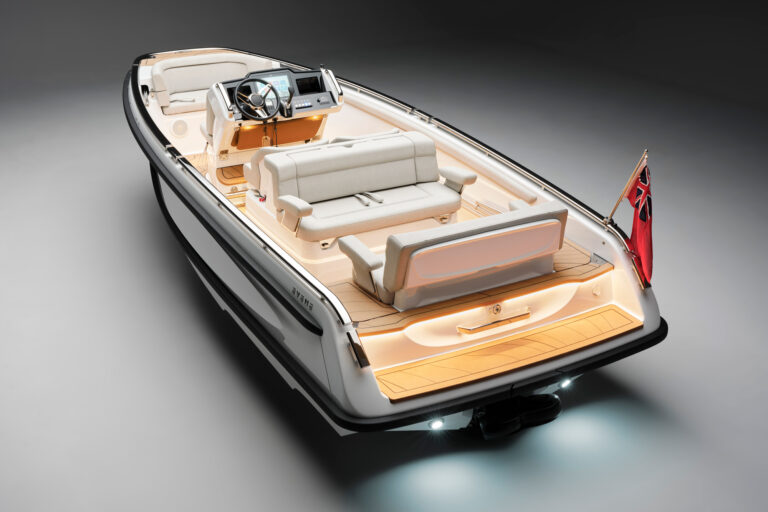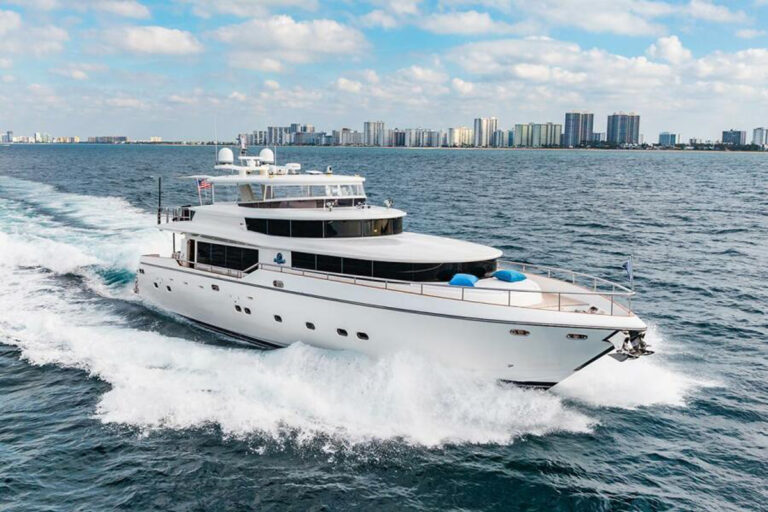South Florida is, for some reason perhaps related to its many eccentricities, more prone to power interruptions that any other region in the United States. At my home in Miami, each momentary hiccup in the electrical grid sets everything from the coffeepot to the DVD player to a perpetual state of noon or midnight. Yachts share this same vulnerability, creating an interesting dilemma: Given our desire for more and better electrical equipment, we keep installing increasingly larger generators. Yet we frequently run these generators even when electrical demands are low, just for the convenience of on-demand AC or to power the electronic wizardry that makes our lives (arguably) easier. This not only wastes fuel, it may damage the very electronics we rely on by creating less than perfect power. Unusually light loads may also glaze cylinder liners with partly burnt oil and fuel, and build up carbon in turbochargers. Recognizing this, many manufacturers are creating tools for better load and fuel management, cleaner and quieter operation, and improved systems monitoring. New technology now helps generators automatically share loads with other generators or even inverters, by turning off unnecessary equipment when generators are overloaded and increasing power draw when electrical demands are unusually low. The ultimate goal: provide household power on the water, wherever we want it, whenever we want it.
For the largest of yachts, Caterpillar’s newest generators are built on the company’s six-cylinder 18C engine, providing from 340 to 550kW. Electronically governed fuel injection and Caterpillar’s newest electronic-control module help keep engine speed constant and power output at precisely 60Hz, even when power demands fluctuate. The electronic governor also gives the C18 cleaner emissions and better fuel economy.
Generators work best when providing about three-quarters of their rated capacity. But if you have two or more generators sharing the same circuit, you must synchronize their output precisely, typically requiring expensive equipment and a full-time engineer. Fortunately, electronic governors are now available and getting better and cheaper.
Phasor Marine has been synchronizing its generators for midsized yachts since the mid-’90s, using electronic governors. “Simplicity has always been our biggest feature, says Alan Murasso, a company spokesman. “We don’t use printed circuit boards or relays, and none of our parts are proprietary so they’re readily available. Everything is easy to troubleshoot and inexpensive to repair. The newest model, a 38kW unit, is built on the same Kubota diesel as its 32kW, yet is smaller and lighter than the John Deere-powered 40kW.
Monitoring most generators requires frequent trips to the engineroom. But Onan’s 18 e-Series models network digital displays on a full line of e-Series gasoline and diesel generators from 4kW to 99kW. Up to three of Onan’s proprietary displays can be mounted anywhere, even in the galley. SmartCraft or SAE J1939 CAN protocol displays are also compatible, allowing existing engine displays to show the generator’s AC voltage and frequency, battery voltage, engine coolant temperature and oil pressure. Onan’s e-Series shuts down if the generator senses a significant fault, and-an unusual feature-a text message is left on the displays.
For more power on smaller boats, Kohler Power Systems has replaced its 8kW diesel generator with the more powerful 9EOZD, rated at 8.5kW at 60hZ. Its Yanmar diesel engine boasts lower emissions and quieter operation.
Both small and large yachts may benefit from inverters that draw direct current from ship batteries to create household AC, for small or intermittent loads without running the ship’s generator. But this requires close monitoring of battery voltage and limits capacity. Xantrex Technology’s newest MS2000 inverter monitors both the DC power supply and AC power demand, automatically starting the generator if either crosses a threshold set by the operator, and transferring power once the generator is running-all fast enough to prevent interruption.
Fischer Panda has added a new 40kW generator to its existing line from 4kW to 22kW. Like the company’s other generators, the 40HD uses asynchronous generator technology common in wind turbines, and cools both the engine and AC generator by circulating antifreeze through a water jacket rather than drawing air through the generator. “We don’t have to dissipate heat out of the sound shield, so we’re about 40 percent lighter and 40 percent quieter than most generators, says Chad Godwin, Fischer Panda’s marine sales manager. Powered by a four-cylinder Kubota diesel and enclosed in a stainless steel sound shield, the new 40HD operates at just 52 decibels, the sound of drizzling rain.
Because hot air is less dense and therefore contains less oxygen, it robs a diesel’s ability to make horsepower and creates electrical resistance that reduces output. Mase’s intercooler system is essentially a reverse-radiator with seawater flowing through it, cooling air from the engineroom before it gets to the air-intake manifold while also circulating hot air inside the sound shield and then over the electrical generator. “Since the engine doesn’t have to breathe hot air, it makes all of its horsepower, says Michael Hudson, Mase’s national service manager. “Yachts can typically get by with our generators one size smaller than calculations call for. Known for using Yanmar diesels, Mase is just now releasing 71kW and 99kW units built on John Deere’s 4045 turbocharged four-cylinder 4.5-liter engine.
Westerbeke’s new 70BEDA Century Series generator uses the same turbocharged 6.5-liter diesel engine as its 60kW and 95kW models. The heat exchanger and exhaust manifold are plumbed with cast aluminum pipe, rather than rubber hose, to cut down on maintenance. An electronic engine governor and voltage regulator provide stable AC voltage and frequency across varied loads.
Generators often run many more hours per trip than main engines, yet they sit so quietly that it’s easy to neglect the zinc anodes that protect cooling components from electrolysis. Realizing this, Northern Lights engineered its cooling system without zincs, casting the heat exchanger tank and exhaust manifold in one piece, without welds to corrode, and isolating dissimilar metal components with rubber boots. Its new 30kW M944W uses a Mitsubishi diesel engine to meet the newest Tier II emissions requirements, in a lighter package than its previous Toyota-powered 33kW.
Often generators are not only neglected, but mistreated as well, running at 1800 or even 3600 rpm for hours with almost no load. Because diesels ignite their fuel with heat, rather than a spark like gasoline engines, running a diesel without an adequate load prevents the pistons from building up enough heat to completely burn the fuel. Baird Wilson, a West Palm Beach diesel mechanic who handles most of the generator work at Florida Marine Tech, recommends devoting a few minutes at the end of each trip to generator health. “Before you plug into shore power, give it a good load for a few minutes, he says. On most boats, the simplest way is to set the thermostat low on two or three air conditioners. Once plugged into shore power, let the generator cool down without a load for a few more minutes. “This cools down the engine and also the generator windings. He also suggests servicing generators at least as often as main engines, more if use dictates.
Shed the Load
Replacing a generator? Electrical engineers list all power demands in a spread sheet, and then develop load analyses for likely scenarios; perhaps a hot summer day with a full complement of guests. If you frequently cook aboard and use lots of galley appliances, or tend to use the washer/dryer and water maker, try load-shedding equipment. This device automatically turns off selected gear during high demand, and turns it back on when more power is available. Load banks, essentially electric seawater heaters, pump their product overboard but vary power consumption to keep generators adequately loaded.
Contacts: Caterpillar www.cat.com Kohler Power Systems www.kohlerpowersystems.com/marine Fischer Panda www.fischerpanda.com Mase www.masenorthamerica.com Northern Lights www.northern-lights.com Onan www.onan.com Phasor Marine www.phasormarine.com Westerbeke www.westerbeke.com Xantrex Technology www.xantrex.com









